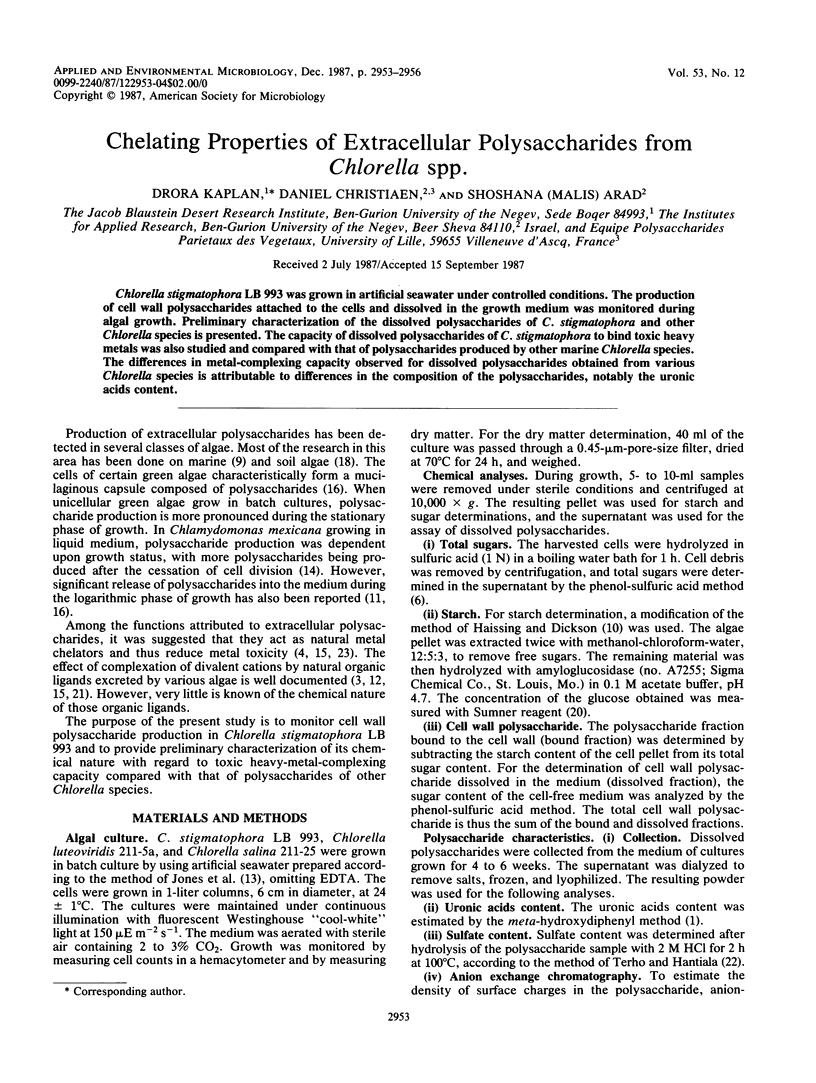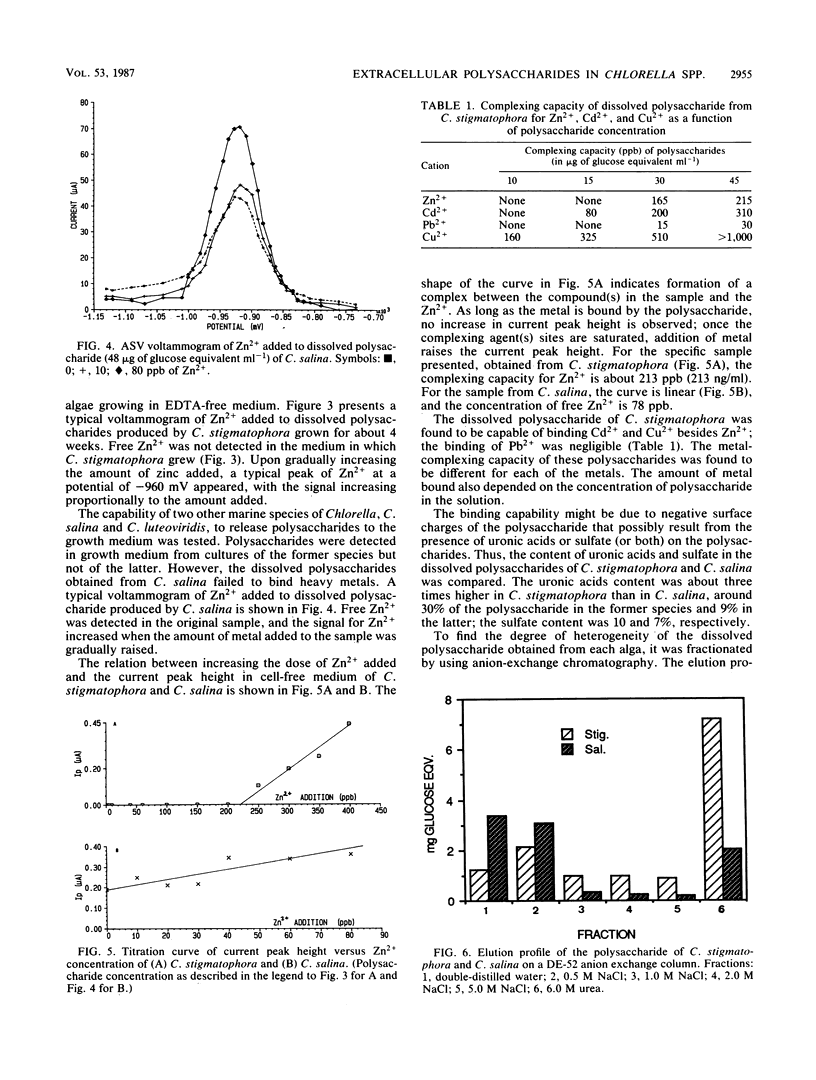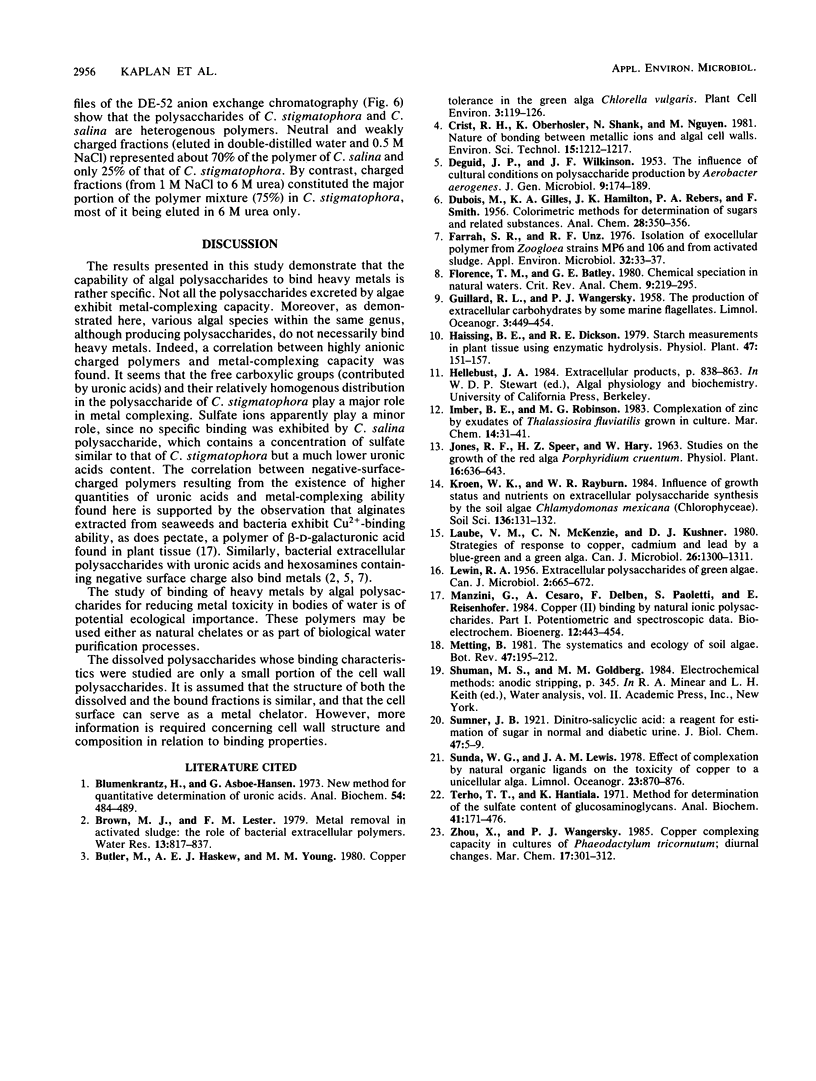Abstract
Chlorella stigmatophora LB 993 was grown in artificial seawater under controlled conditions. The production of cell wall polysaccharides attached to the cells and dissolved in the growth medium was monitored during algal growth. Preliminary characterization of the dissolved polysaccharides of C. stigmatophora and other Chlorella species is presented. The capacity of dissolved polysaccharides of C. stigmatophora to bind toxic heavy metals was also studied and compared with that of polysaccharides produced by other marine Chlorella species. The differences in metal-complexing capacity observed for dissolved polysaccharides obtained from various Chlorella species is attributable to differences in the composition of the polysaccharides, notably the uronic acids content.
Full text
PDF



Selected References
These references are in PubMed. This may not be the complete list of references from this article.
- Blumenkrantz N., Asboe-Hansen G. New method for quantitative determination of uronic acids. Anal Biochem. 1973 Aug;54(2):484–489. doi: 10.1016/0003-2697(73)90377-1. [DOI] [PubMed] [Google Scholar]
- DUGUID J. P., WILKINSON J. F. The influence of cultural conditions on polysaccharide production by Aerobacter aerogenes. J Gen Microbiol. 1953 Oct;9(2):174–189. doi: 10.1099/00221287-9-2-174. [DOI] [PubMed] [Google Scholar]
- Farrah S. R., Unz R. F. Isolation of exocellular polymer from Zoogloea strains MP6 and 106 and from activated sludge. Appl Environ Microbiol. 1976 Jul;32(1):33–37. doi: 10.1128/aem.32.1.33-37.1976. [DOI] [PMC free article] [PubMed] [Google Scholar]
- Laube V. M., McKenzie C. N., Kushner D. J. Strategies of response to copper, cadmium, and lead by a blue-green and a green alga. Can J Microbiol. 1980 Nov;26(11):1300–1311. doi: 10.1139/m80-217. [DOI] [PubMed] [Google Scholar]
- Terho T. T., Hartiala K. Method for determination of the sulfate content of glycosaminoglycans. Anal Biochem. 1971 Jun;41(2):471–476. doi: 10.1016/0003-2697(71)90167-9. [DOI] [PubMed] [Google Scholar]


